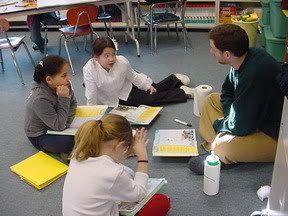
There are better ways to provide the instruction that students need without relying on boring drills or lengthening an already demanding school day. For years, savvy teachers have been integrating the curriculum - using high-quality children's literature to teach phonics and other basic reading skills; combining reading and art lessons with history, social studies, science, and math; and relying on the concepts of multiple intelligences theory and differentiated learning to reach every child.
The availability of high-quality children's literature has never been greater. Children's book publishers are providing rich collections of compelling stories that reflect the increasingly diverse world of today's primary and middle school students. Educational publishers are also offering colorfully illustrated, engaging books and periodicals on a wide variety of subjects designed to meet today's national curriculum standards.
For years dedicated teachers have known about and used multiple intelligences theory in their classrooms. Harvard graduate school professor Howard Gardner proposed in his 1983 book Frames of Mind that human beings learn by use of seven different intelligences - verbal, logical-mathematical, musical, visual-spatial, tactile kinesthetic, and inter- and intrapersonal. He later suggested that more intelligences exist, among them naturalistic intelligence, spiritual intelligence, and something he referred to as "existential" intelligence. Teachers quickly latched onto this concept to provide a variety of learning experiences in their classrooms involving these intelligences.
In addition, they've geared their teaching methods to children functioning at a variety of developmental and intellectual levels. The combination of multiple intelligences theory and individualized learning opportunities has in recent years been formalized as differentiated or differential learning. Differentiated learning allows for targeted instruction that will teach children the basics needed to meet state and national requirements while providing support for slower learners and enrichment for learners at all levels. A wealth of materials for both multiple intelligences theory and differentiated learning is available to help teachers structure a supportive classroom environment for all their students.
The demands of the "No Child Left Behind" Act don't have to result in developmentally inappropriate expectations or rigid scheduling for our children. Schools can use many creative, child-friendly techniques that will help students of all ages meet learning standards while retaining their carefree, fun-loving kid status.
By Aldene Fredenburg



0 comments:
Post a Comment